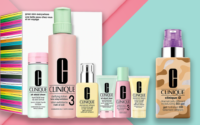Doctor warns acrylic fake nails could turn nails green
Acrylic nails may be durable and last a while, but is it really worth it?
A doctor has warned that acrylic fake nails could lead to an infection that turns your nails green and crusty.
Dr. Sermed Mezher posted on his TikTok account warning his 143,100 followers about “a beautician’s nightmare:” The Greenies.
In the video, he shows the fingers of a woman with a crusty nail bed and a nasty green color on the nails.
“Thinking of getting acrylic nails done on the cheap? Think again,” Mezher said in the video.
He explained that “beyond being unsightly,” the condition is called chloronychia, also known as Green Nail Syndrome (GNS), and can happen if the acrylic nails haven’t been applied properly and there’s a space between the actual nail and the acrylic that wasn’t properly filled.
According to the American Osteopathic College of Dermatology (AOCD), chloronychia is caused by a “particularly nasty” bacteria called Pseudomonas aeruginosa, which thrives in wet environments.

Mezher detailed how Pseudomonas aeruginosa doesn’t just cause nail infections and, though it’s rare, it can be transferred from the nail to other parts of the body, or even other people if they’re immunocompromised.
When the acrylic and the actual nail are detached, the waterproof seal formed by the skin is lost, and there’s an entryway for the bacteria to come into the space.
“Beyond being unsightly, there can actually be a big problem as it can take between one to four months for the nail actually to grow out, even with treatment,” Mezher explained. “We can use things like acetic acid or antibiotics to try and get rid of this.”
The ACOD says that GNS responds well to treatment, which includes cutting the detached portion of the nail, keeping nails dry and avoiding trauma to the area. If the infection continues for one to four months, topical antibiotics — such as bacitracin or polymyxin B — can cure most patients.
However, if treatment does fail, the nail might need to be removed altogether.


